When I was 15 years old, I had a girlfriend. She was 22, married and my pastor’s daughter. That’s all I’m going to say about that. Except that I would meet her in the parking lot of the hospital next to my high school and we would talk and listen to music. As she was older, she listened to music that I was unfamiliar with. I remember hearing Love and Rockets, Billy Idol’s stellar Vital Idol album, Prince’s “If I Was Your Girlfriend” and Glenn Frey’s pleasant 1988 blue-eyed soul record Soul Searchin’. I was sitting in this girl’s Honda Civic one lunch hour when I first heard Steve Winwood’s Back in the High Life album. Even at my young age, I could discern a certain quality in the record, in its longer-than-usual 8 songs. Steve sang in a voice that was somewhat inscrutable to my young ears but the album’s class resonated with me. For my birthday, this girl bought me some cassettes, one of which was Best of Traffic, a compilation from Winwood’s earlier band. Comparing “Dear Mr. Fantasy” with “Freedom Overspill” – two very different but equally compelling songs – got me to dig in to this unique artist. The relationship with this girl was short-lived – parents! What are you gonna do? – but Stevie and I are still together.
Steve Winwood is a unique and prolific artist. While following his muse into sometimes enigmatic realms, he became a master of the keyboard and was part of a variety of musical units all with a high level of musicianship. After his forays into more progressive music, he sequestered himself in the studio and emerged with largely self-made songs in a decidedly pop vein that appealed to the masses. After scaling the heights, he rejoined musical friends and put a “respected elder statesman” capper on an exemplary career.
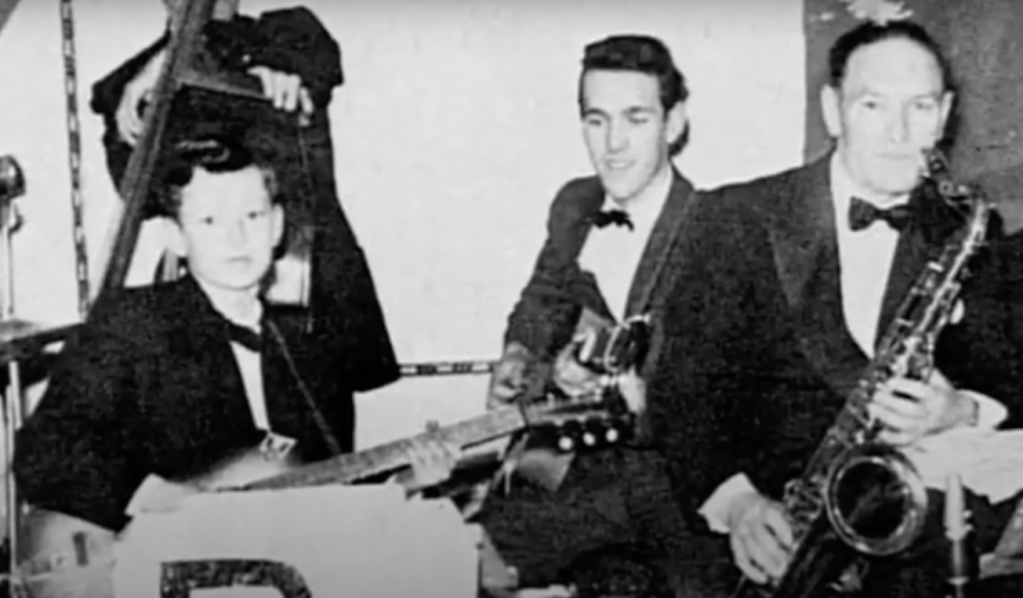
Steve was born in Birmingham, England in the spring of 1948. As a 4-year-old, Steve played swing and Dixieland on the piano and soon developed skill on drums and guitar while also singing in a church choir. By 8, he was joining his father and older brother, Muff (born Mervyn in 1943), in a band that often played in pubs; underage Steve had to be concealed behind the piano. Steve and Muff both attended the Great Barr School in Birmingham (now the Fortis Academy) and while still students there they both became involved in the local blues/rock scene. Starting in 1958, Steve backed many preeminent blues musicians when they visited the United Kingdom. The legendary Muddy Waters was the first blues man to cross the ocean to perform in the UK and Steve – all of 10 years old – backed him on Hammond C-3 organ. As he entered his teens, Steve began to develop as a singer and patterned his voice on that of Ray Charles. His future collaborator, Eric Clapton, has said that it was generally considered that the teenaged Winwood could sound almost identical to Brother Ray and that this was the ultimate compliment among the young white Britons who were idolizing American R&B performers.
Spencer Davis (1939-2020) was born in Swansea, a child of the Blitz. He recalled using his bombed-out hometown as his playground. His father was a paratrooper during the war and, while his dad was away, an uncle taught him to play the harmonica and the accordion. Reaching American rhythm and blues through first skiffle and then jazz and blues, Davis picked up the guitar and moved to Birmingham as a student. Upon arriving, he started dating and making music with Christine Perfect, soon to find fame as Christine McVie. One serendipitous night, Davis entered the Golden Eagle pub where the Muff Woody Jazz Band, featuring Muff and Steve – still a fourteen-year-old schoolboy – were playing. They joined forces and began performing regularly as the Rhythm and Blues Quartette; they later settled on the sobriquet the Spencer Davis Group because Davis was the only one who enjoyed doing interviews. The Golden Eagle shuttered in 1984 but today you can enjoy a commemorative Golden Eagle ruby ale and you can visit the former site of the club. Admission is free; it’s a parking lot.
The Spencer Davis Group, then, was the first unit with which Steve – now often billed as “Stevie” Winwood – made hit music, memorable music that would sustain through the years. Keep in mind that while with Davis, Winwood was a teenager, performing with the group between the ages of 14 and 19. Added to the group was drummer Pete York (born 1942). It was with Davis that Steve first came into contact with Chris Blackwell of Island Records. Blackwell – born in 1937 in London – was sailing one day in 1958 when his craft hit a coral reef and Chris had to swim for shore where he collapsed. He was rescued and nursed back to health by Rasta fishermen. The experience proved life-altering as Blackwell was forever connected to the Rastafari lifestyle and it’s music. He began Island Records – named after the Alec Waugh novel and eventual film Island in the Sun – that same year at age 21. He discovered the Spencer Davis Group and Winwood recorded for his label deep into the 1980’s. Brooklyn-born Jimmy Miller (1942-1994) became the group’s producer and also worked with Winwood for years. Miller was the son of Bill Miller, the Las Vegas entertainment director who booked Elvis Presley into the International Hotel in 1969. Jimmy would also produce seminal albums for the Rolling Stones.
It was this team that began to release singles that charted in the UK. A cover of Motown‘s “Every Little Bit Hurts” also reached the Top Ten in Canada. Written by another Island artist, Jamaican Jackie Edwards, the Spencer Davis Group’s first big hit was “Keep On Running”, a Top Ten record across Europe and #1 in England. The group started ’66 with another UK chart-topper, “Somebody Help Me”, another song written by Edwards. While the group would soon make their mark in Top 40 pop music, their supreme R&B bona fides can be heard in tracks like “Back Into My Life Again”, “Every Little Bit Hurts” and “Together Till the End of Time”, the latter two being almost note-for-note covers of songs by Motown’s Brenda Holloway. The group missed with their next several singles until putting their indelible stamp on the music of this era.
“Gimme Some Lovin'” came about organically. After several lacklustre singles, another recording session loomed with no material deemed worthy of tackling. Chris Blackwell took the boys to the rehearsal room of the Marquee Club on Oxford Street in London – the location of the first ever live performance by the Rolling Stones on July 12, 1962 – and tersely told them to come up with a new song. Muff remembers that the frustrated band members started riffing and began to feel the groove – even though it was 11:00 in the morning. Inside a half hour, the song came together and an hour later they were celebrating in a café down the block. Blackwell found them relaxing there and blew his stack. After the lads had played him the song, he changed his tune. They recorded it the next day and had another #1 song (#7 US) and a classic of the era. “Gimme Some Lovin'” features a driving bass line from Muff, a great hi-hat sound from York but most notably the wonderful sound of Stevie’s wailing Hammond organ. It is an energetic, celebratory song.
“We shouldn’t really have been making that film…I take a real cynical view. I think it’s rather typical of the way music gets driven into some kind of commercial popular way in order to generate revenue. And, I mean, to be honest, I’ve suffered a bit from that the whole of my career. Going along with things like that where, had I been more on the ball, I would’ve not done it, you know?”
– Steve Winwood talks of the appearance of the Spencer Davis Group in the 1966 film The Ghost Goes Gear. Brother Muff says that the goofy film was the last straw and broke up the band.1
Much the same can be said for the second iconic track to come out of the Spencer Davis outfit. “I’m a Man” was written solely by Steve and again from the outset the rhythm section is right in the pocket. Muff’s bass line propels us out of the gate to be followed briskly by Pete York’s cracking snare. Also similar to “Gimme Some Lovin'”, “I’m a Man” features a vocal from Steve in his inimitable style rendering many of the lyrics unintelligible; which makes it frustratingly difficult to sing along to. An added feature of this tune was excited percussion, creating a sound that Winwood was to explore in the future. A catchy chorus and more sturdy Hammond work from Steve helped land this tune in the Top Ten of six countries. A successful cover by Chicago Transit Authority helped to make this song a classic of the time. It was at this point on the mountaintop that the Winwood brothers decided to step away and pursue other avenues.
Muff Winwood parlayed his relationship with Chris Blackwell into a position at Island Records away from the spotlight. He became an A&R man for the company and worked there until 1978 when he moved to CBS Records. He has forged an enviable career as a producer and finder of talent. Through the years he has produced the debut album by Dire Straits and works by Marianne Faithfull, Mott the Hoople and others. He also signed artists to their first record deals including Terence Trent D’Arby, Sade and the Psychedelic Furs among others. Brother Steve began to look over the horizon and his first move was to join a friend who would become a lifelong ally.
TEENAGE SOUL
- Keep on Running
- Gimme Some Lovin’
- Trampoline
- I’m a Man
- Waltz for Lumumba
- Goodbye Stevie
Perhaps as simply a diversion and a means by which he could strike out on his own, Winwood joined forces with Eric Clapton in a one-off conglomeration that went by the name Eric Clapton and the Powerhouse. It was actually as early as March of 1966 that the all-star unit was formed to record three blues/rock songs for a compilation album. Manfred Mann’s Paul Jones and Jack Bruce joined Eric, Steve and Pete York for the short-lived studio project. Each would go on to blaze trails, Bruce sticking with Clapton to form Cream. Steve Winwood and Eric Clapton would meet again but for now Winwood would hook up with some new friends.
Keep in mind that, in April of 1967, Steve Winwood was still just 18 years old. But he had already spent years fronting a hit-making band and he felt it would prove an easy task to get others to join his cause. Evidence of the new direction could be heard in the percussion-heavy “I’m a Man” and Steve put together an eclectic unit. The Elbow Room is a legendary nightclub in Birmingham with a unique history. Ozzy Osbourne, footballer George Best and gangsters the Kray Brothers have been known to frequent the club and it was there that Stevie began to jam with his new mates. Drummer, vocalist and lyricist Jim Capaldi (1944-2005) had been in a band with guitarist, vocalist and songwriter Dave Mason (born 1946) and Chris Wood (1944-1983) was a saxophonist and flautist who had a sister who designed clothes for the Spencer Davis Group. The four decided to form a band and stood on a curb in Dorchester waiting to cross the street; Capaldi suggested they call themselves Traffic. The group – conceived by Winwood as a cooperative despite the draw of his name – convened in privacy at a cottage in Berkshire to create their first sounds. The idea was to live and work communally; to cut themselves off from the rest of the world and create together.
The group released some singles and recorded their first record for Island. Mr. Fantasy was released near the end of ’67 and was received favourably by both the press and the public. The album contains the excellent “Heaven is in Your Mind” and “No Face, No Name and No Number” but the highlight is the stunning “Dear Mr. Fantasy”. Featuring Capaldi’s stuttering snare and bass drum work, Steve’s swirling organ and spacey vocals and Mason’s harmonica, the song is a magnificent piece of work. Of particular note is Winwood’s searing guitar solo, one of my three favourite guitar solos of all-time. All one has to do is listen to this track to appreciate Steve Winwood’s virtuosity. “Dear Mr. Fantasy” is my 10th-favourite song of all-time.
“He was off on another road to us which is fine but the fact remained it wasn’t the same route that we were going. He wanted to write completely alone and get us as a band to play his composition. So, we wrestled with that and really kicked Dave out of the band because he was completely opposite to what Traffic had ever wanted to do.”
– Winwood explains Dave Mason’s relations with the band.
A cursory look at the track listing of Mr. Fantasy will indicate a fissure in Traffic. All of the album’s tracks with vocals were either written by some iteration of Winwood/Capaldi/Wood – or by Dave Mason alone. Mason left the band in January of 1968, shortly after their debut album was released and before Traffic began a tour in support of their record. Needing his contribution, however, Mason was invited back in May when the band went in to record their follow-up, Traffic. Interesting to note that fully half – 5 of the ten songs – of the album was written by Dave Mason. The record contains what I consider to be Mason’s one great contribution to music, “Feelin’ Alright?”. Capaldi’s mighty snare and Wood’s dreamy sax solo add much to the mellow vibe of this track that has become a rock standard. But Mason was gone again by the time the band – as a trio – toured the US in late 1968. Things began to splinter and after a third LP, the haphazard Last Exit that is saved by the inclusion of “Medicated Goo”, my 31st-favourite song, Winwood himself walked away from his second successful band. He was not yet 21 years old.
“It was felt by Jim and Chris that there was an element of disloyalty on my part and they’re probably right.”
– Winwood owns up to bailing on Traffic.
He landed once again next to his old buddy, Eric Clapton, in the short-lived supergroup Blind Faith, who released one album with the world’s worst cover before both Winwood and Clapton lost interest. Perhaps no longer wanting to put his trust in sidemen, Steve began working on a solo LP. After bringing in Capaldi and Wood to contribute, the three decided to release the album as a Traffic record. John Barleycorn Must Die is a stellar recording. The title track is an atmospheric adaptation of an old English folk tune and the other standouts are jazzy, blues/rock numbers “Glad” and “Empty Pages”. The former features excellent piano work from Winwood and some 35 years later Christina Aguilera brought Steve in to play the same riff on “Makes Me Wanna Pray” from her Back to Basics album. John Barleycorn was Traffic’s highest-charting record in the US reaching #5.
The band then expanded their line-up adding Ric Grech from Blind Faith on bass, Derek and the Dominos drummer – and revered creator of the piano coda of “Layla” (34th-favourite song) – Jim Gordon, percussionist Rebop Kwaku Baah – and a guitarist named Dave Mason who stayed long enough to play on the live Welcome to the Canteen before leaving again. Next up was the progressive jazz/rock unclassifiable album The Low Spark of High Heeled Boys bearing a title suggested by actor Michael J. Pollard. The almost 12-minute title track is a highlight as are “Rock & Roll Stew”, a Capaldi/Grech contribution and “Light Up or Leave Me Alone” by Capaldi. This album and the next were pressed with two corners of the LP jacket clipped in an attempt to create the illusion of a cube. Low Spark was a Top Ten album in the US. My favourite Traffic album and one that is near and dear to me followed in 1973.
As a teenager, I found Shoot Out at the Fantasy Factory used on cassette at a Dr. Disc record store. One summer we had a large tent set up in our back yard and I spent the hot nights laying in the darkness listening to this album. While I couldn’t quite discern what it was saying, I sensed it was telling me something profound. The record charted high in the US (#6) and sold well but suffered critically. Like many artists before and after them, Traffic at this point came into contact with the music city of Muscle Shoals. Normally, acts will descend on the small Alabama town and make use of world-class recording facilities there but Traffic instead poached a few of the town’s players. Four members of the legendary Muscle Shoals Rhythm Section play on Shoot Out with two of them being listed on the jacket as members. Three of the four toured as part of the band. The title track is a page taken out of Lalo Schifrin’s film music book and is particularly reminiscent of the Argentinian’s score for Enter the Dragon. “Roll Right Stones” is one of my three favourite Traffic songs. Concerning itself with time, it is apropos that the track is nearly 14 minutes in length. The Rollright stones are a complex of three prehistoric monuments in Oxfordshire.
Courtesy beercan640
As happens with so many groups, eventually Traffic dissolved amid dissension. Steve had been battling peritonitis and this contributed to his unrest and Chris Wood – another sadly common tale – was struggling with addiction. Winwood closed this chapter of his career by vanishing. He walked off the stage in the middle of the band’s show in Chicago and the tour and the band were both over. Winwood and Capaldi would record again as Traffic in 1994. They released Far From Home and toured behind the record, often as openers for the Grateful Dead (“They were kindred spirits” – Bob Weir). Chris Wood succumbed to his addictions in 1983, the same year that percussionist Rebop Kwaku Baah died while on stage of a cerebral haemorrhage. Jim Capaldi passed in 2005, the victim of stomach cancer.
FROM THE FANTASY FACTORY
- No Face, No Name and No Number
- Dear Mr. Fantasy
- Feelin’ Alright?
- Medicated Goo
- Can’t Find My Way Home
- Glad
- John Barleycorn (Must Die)
- The Low Spark of High Heeled Boys
- Shoot Out at the Fantasy Factory
- Roll Right Stones
For three months in 1970, Steve had also joined a superstar conglomerate headed by drummer Ginger Baker called Ginger Baker’s Air Force and played on the group’s inaugural album. Later in 1976, Winwood spent time working with Japanese musician Stomu Yamashta on a concept album recorded under the name of Go that also featured Michael Shrieve and Al Di Meola. He spent the bulk of the 1970’s doing session work (including a fantastic Minimoog solo on George Harrison’s excellent “Love Comes to Everyone” from 1979) and living the quiet life of the country squire, enjoying walks with his dogs in the English countryside around his home. But Island Records was anxiously awaiting an album so Steve began to work – often by himself – and emerged with his self-titled debut album as a solo artist; he was 29 years old. On the record, Steve plays electric piano, synthesizer, electric guitar, saxophone, organ, clavinet (my favourite instrument), acoustic piano, harmonium, harpsichord, acoustic and electric basses, drums, percussion and acoustic guitar. And he sang. Leads and back-ups. And he produced it. Probably made his own lunch while recording, too. The album charted fairly well but was then and is today considered somewhat underwhelming.
For his next release, Winwood hid out in the studio he built for himself on his farm in Gloucestershire. This time he decided to REALLY do things himself; Winwood not only provides every, single sound you hear on Arc of a Diver but he also produced and engineered the album by himself. It was his breakthrough as a solo artist reaching #3 on the album charts and it contained his first hit as a solo act, “While You See a Chance” (#7 Pop). I like what William Ruhlmann said for Allmusic; “Utterly unencumbered by the baggage of his long years in the music business, Winwood reinvents himself as a completely contemporary artist…” Talking Back to the Night (1982) was Steve’s follow-up and the self-made record was more electronic and synth-heavy than his previous. It wasn’t quite as successful but contained the single “Valerie”. Winwood then found himself at another crossroads as his long-standing contract with Island Records was coming to an end. Sensing there was a potential superstar hitmaker lurking behind the quiet country gentleman, Virgin Records splashed out $13 million and lured Steve away. He was linked with producer Russ Titleman. Part of the new wave of young music-makers in Los Angeles in the 1960’s, Russ had produced scores of records for the likes of Randy Newman, George Harrison and James Taylor and would later work with Brian Wilson and Eric Clapton. Titleman issued Steve one proviso; he felt Winwood should leave the farm house and record his next record in New York City to tap in to the vibrant musical vibe of the metropolis. The move proved monumental.
Back in the High Life is “where I came in”. The album looms large in Winwood’s legend and I have only two choices; to expound at length on it or to just stick to a few salient points. For the sake of brevity, I will choose the latter. With this record, Steve went against his nature and fully embraced the pop star image that this ebullient music called for. “Higher Love” starts the record off and became Winwood’s first Number One song on the Pop charts and picked up two Grammy Awards. It features vocals from Chaka Khan. “Freedom Overspill” was always a favourite of mine and features Joe Walsh on slide. The wonderful “Back in the High Life Again” contains perhaps my favourite harmony vocals provided by James Taylor. It along with “Higher Love” was also nominated for Record of the Year. “Split Decision” is another hidden gem that features Walsh on guitar.
“It was very much 80s production sound on it…MTV to me was a sort of necessity (as) I was constantly being told, so that was fine by me. Well, I mean, I went along with it, I should say. I don’t know how fine it was but I went along with it.”
– Steve on singing and dancing in music videos.
While the record contains a lot of programmed music, it still bears elements of Steve’s style of fusing different genres and sounds and is rooted in Steve’s soulful voice. In contrast to the synthetic sounds on the record, I was here introduced to the mightily authentic drum sound of session man John “JR” Robinson (“the most recorded drummer in history”, born 1954). His powerful snare work and his robust style are highlighted throughout the record. With Back in the High Life, Winwood – at 38 years old – had reached the pinnacle as he entered a third act in his storied career.
“Steve Winwood of the 80s kind of fitted the 80s. I’m not sure it fitted him. To me, it looked uncomfortable because I knew that he would be struggling with it. But it was a very lucrative period for him.”
– Muff Winwood, who knows his brother well.
Somewhat embracing his new stardom, Winwood followed up High Life with 1988’s crowd-pleasing Roll With It, the first album I bought of Steve’s when it was new. Even my young ears could detect a signature Motown drum fill that began the title track. In fact, it was Steve himself playing drums on the track as he was back to his old tricks, playing everything on “Roll With It”. The added horns were provided by none other than the Memphis Horns. The track – and the accompanying video – expressed an old school R&B/Motown vibe. So much so that a songwriting union felt that the track sounded too much like Junior Walker’s “(I’m a) Roadrunner” and subsequently songwriting legends Holland-Dozier-Holland were added as songwriters. “Roll With It” was another #1 song. As earthy as this track was, here on this album I noticed Steve “playing” something called “Fairlight programming”. Being a lifelong believer in organic sound, this troubled me but I gave – and give – Winwood a pass.
The mighty John Robinson is back on drums and his exploding snare highlights “Holding On”, another hit from the album. Actually, both “Roll With It” and “Holding On” had music videos made that were directed by David Fincher. “Don’t You Know What the Night Can Do?” was another huge hit for Winwood and Robinson again shines. These last two tracks illustrate one of the things I love about Steve Winwood; he has so much to say, musically. While they are not extended suites or songs that tell a long story, they still are lengthy songs. “Holding On” is a full 6 minutes in length and “Don’t You Know” is almost 7 minutes long. This may be where the idea started for me; I often factor in the length of a song when assessing what I perceive as its quality. “Hearts on Fire” was a sleeper song for me. It took awhile but the Winwood/Capaldi composition really grew on me. I’m proud to report that part of Roll With It was recorded in Toronto at McClear Place Studio.
Official Steve Winwood
Refugees of the Heart followed and it was more of the same – in a good way – but simply didn’t catch the public’s ears. Jim Capaldi was on hand again and co-wrote the Top 20 single “One and Only Man”. “Every Day (Oh Lord)” and “Running On” are great songs but the album lacks punch. I saw Steve when he toured in support of this record. Soon after, Winwood and Capaldi resurrected Traffic and released Far From Home in ’94; again, I saw them when they toured. More on that later. Because of the Traffic detour, Winwood didn’t release another solo LP until 1997’s Junction Seven. The record was not received well. Interestingly, Winwood had come a long way from making Arc of a Diver all by his lonesome; Junction Seven features contributions from no less than 35 people, among them Lenny Kravitz and Eugenia Winwood, Steve’s second wife. Sadly, the record is slickly programmed and sounds very synthetic. Perhaps music had changed since Back in the High Life but the superstar run was over. After Junction Seven, Steve Winwood entered a fourth act of his storied career. Though not yet 50, he had already made it to “living legend” status and his releases were no longer aimed at the charts and how they were received was no longer a yardstick measuring their quality. This new status and his career in general was given shiny new significance when Steve yet again joined his mate Eric for a series of performances at Madison Square Garden. Steve and Clapton shine as they run through selections from each other’s catalogue. By all means, you should watch the concert DVD. The purity is almost emotional. Watching and hearing these two play and sing is the purest expression of art in this idiom you are likely to experience. It is, in many ways, what music is all about.
THE HIGH LIFE
- While You See a Chance
- Valerie
- Higher Love
- Freedom Overspill
- Back in the High Life Again
- Split Decision
- Roll With It
- Holding On
- Don’t You Know What the Night Can Do?
- Hearts on Fire
- Every Day (Oh Lord)
- One and Only Man
- Running On
Kingswood Music Theatre in Canada’s Wonderland used to put on a series of summer concerts and once you bought admission to the park, the concerts were $8. I saw scores of acts there. Because you had paid admission to the park, it made sense to go early and to go on all the rides and play all the games. But one summer I was there like 6 times; forget the rides. I would just hang around the park, enjoy the sunshine and wait for the show. I saw Steve Winwood there Thursday, July 4, 1991. Then I saw Traffic there Tuesday, August 2, 1994. Steve’s show in ’91 was excellent. I will never forget as long as I live the lights searching the crowd and illuminating scores of thirtysomethings dancing to “Higher Love”. Later when I saw Traffic I noticed those in attendance sure looked different from those at the Winwood show.
What floored me was that, up on the stage, gone was crowd-pleasing front man Steve Winwood singing his blue-eyed soul/pop and instead I saw a man who said nothing, letting Jim Capaldi engage with the crowd. And I heard this clean cut guy play magnificent guitar solos. I didn’t have access to much information at that time and was still unsure who had played what in Traffic. I knew Steve as a keyboardist; I couldn’t get my head around Winwood as a guitar player. At that show he blew my mind with his virtuosity. I’ll also never forget when the band went in to “Light Up or Leave Me Alone”. Perhaps I was somewhat naïve but I was shocked that – within seconds – I think the whole place had sparked up a spliff. The old dudes to my right were passing one along the aisle; I just passed it along to my buddy. The dichotomy of these two shows helps to describe the long career of Steve Winwood.
His music may not always have been accessible. I’ve mentioned earlier his unique way with a lyric; I can’t always make out what he’s singing. And Traffic is a distinctive outfit to say the least. I’ve had a friend for years who is a musician. Stevie Ray, we call him. Back in the day, I couldn’t wait to turn Stevie on to Traffic and I had him over once to Apartment Zero and played him some tracks. I figured as a musician he more than the rest of my friends could fully fathom what Winwood and Co. were putting down. I was surprised by his indifference. He said “it seems like there’s something…missing”. I was pretty dumb at the time and I couldn’t quite understand what he meant. But soon his comment made sense. Traffic was not concerned one iota with making pleasing sounds or having hits. They were meandering through the heather, interpreting the sounds they had heard in the glade. Subsequently, their catalogue can be…challenging. But every now and then what you hear from the band is wonderfully perfect.
I’ve often felt conflicted, too, with Winwood as a solo artist. Often – too often? – Steve decided to tell his tales with the help of electronics. Many times I’ve been frustrated by the sound of drum machines, synthesizers and the mysterious Fairlight programming. For a guy who always could wail on a Hammond B-3 or a Fender Stratocaster, I couldn’t figure out why he chose to program so much of his music. But some artists are bigger than such things. Some artists cannot help but make sounds you can connect with regardless of what they’re using to make those sounds. Steve Winwood is a guy like that for me. And I mentioned earlier the perfection of his shows at the Garden with Slowhand. I watched the concert recently and I literally teared up at one point. I found something poignant in these two 60-year-old men, dressed in average shirts and pants, simply and organically playing music that had its roots in the earth, in the soil. The blues. Winwood even more than Clapton represents to me the simple man. The country squire who is quite happy on the farm with his wife and dogs, thank you very much. Humility. Simplicity. I really like that about Steve.
So many boxes checked. Steve Winwood is a straight up legend whether you know it or not. From Spencer Davis and Jimi Hendrix, to B.B. King and Howlin’ Wolf. From Robert Palmer and David Gilmour to Christine McVie and Billy Joel. All the way up to Miranda Lambert and Christina Aguilera. Winwood has played with them all and charted a unique course through the industry. And through my life.
- Quotes from BBC Documentary Steve Winwood: English Soul (2013).
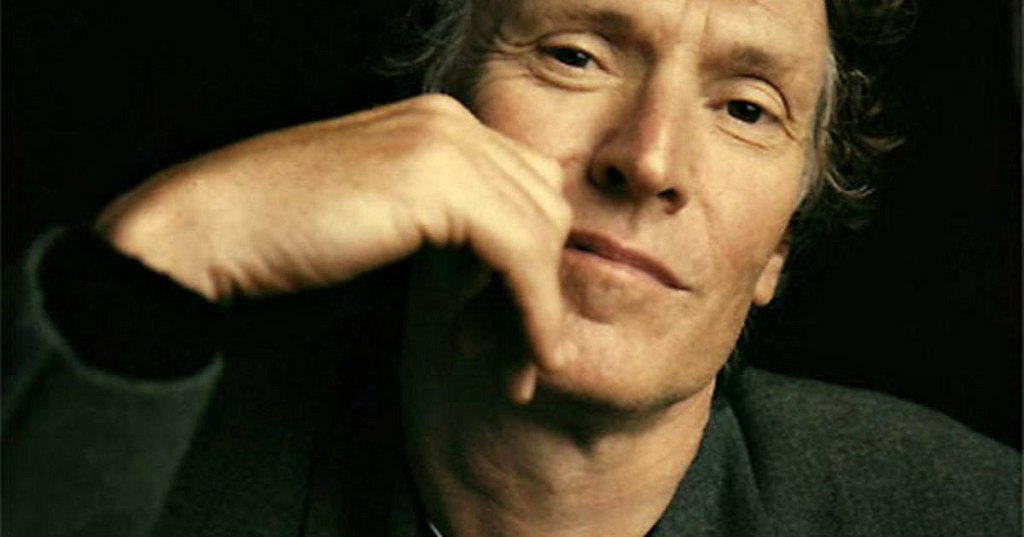
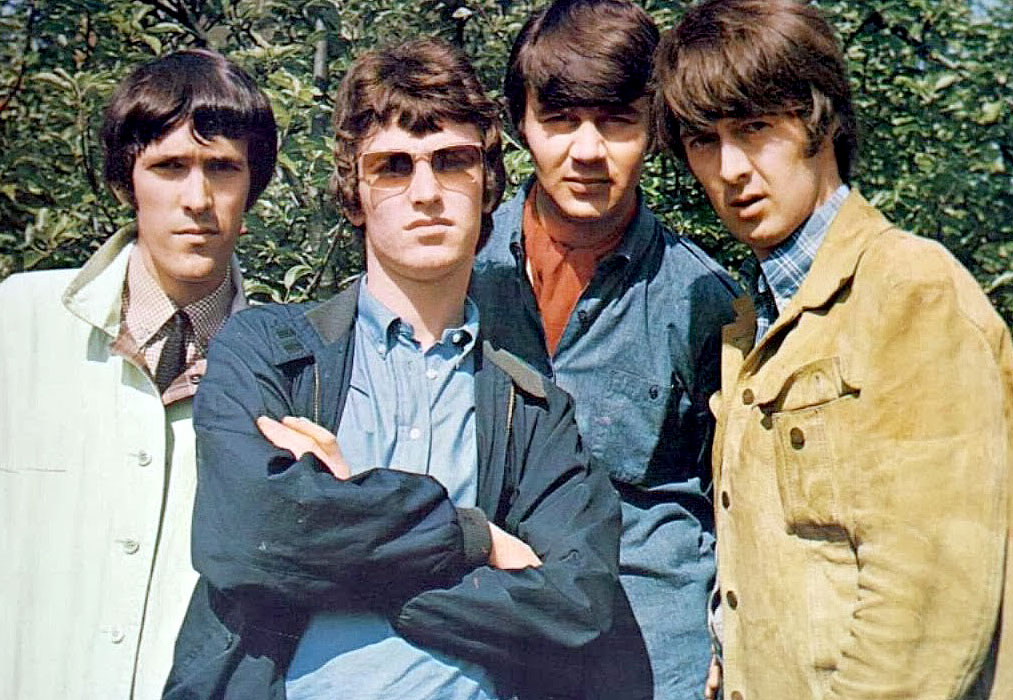
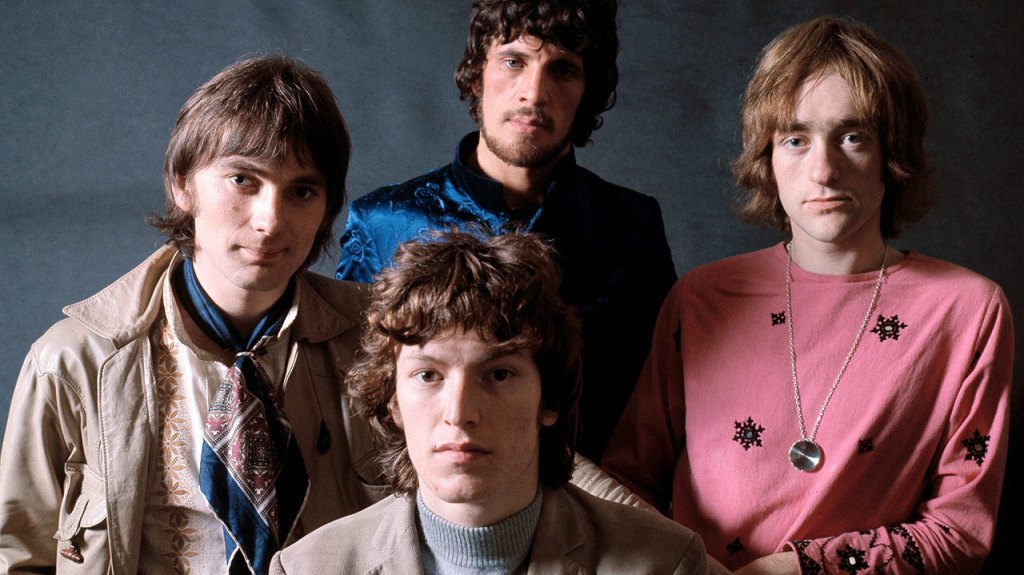
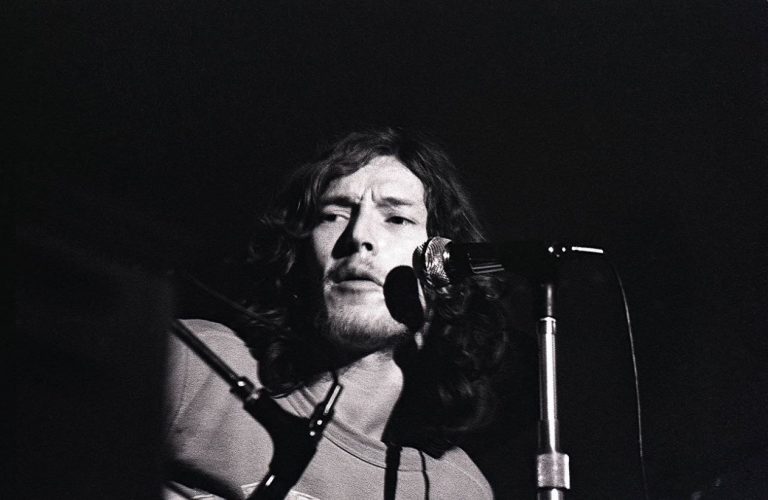
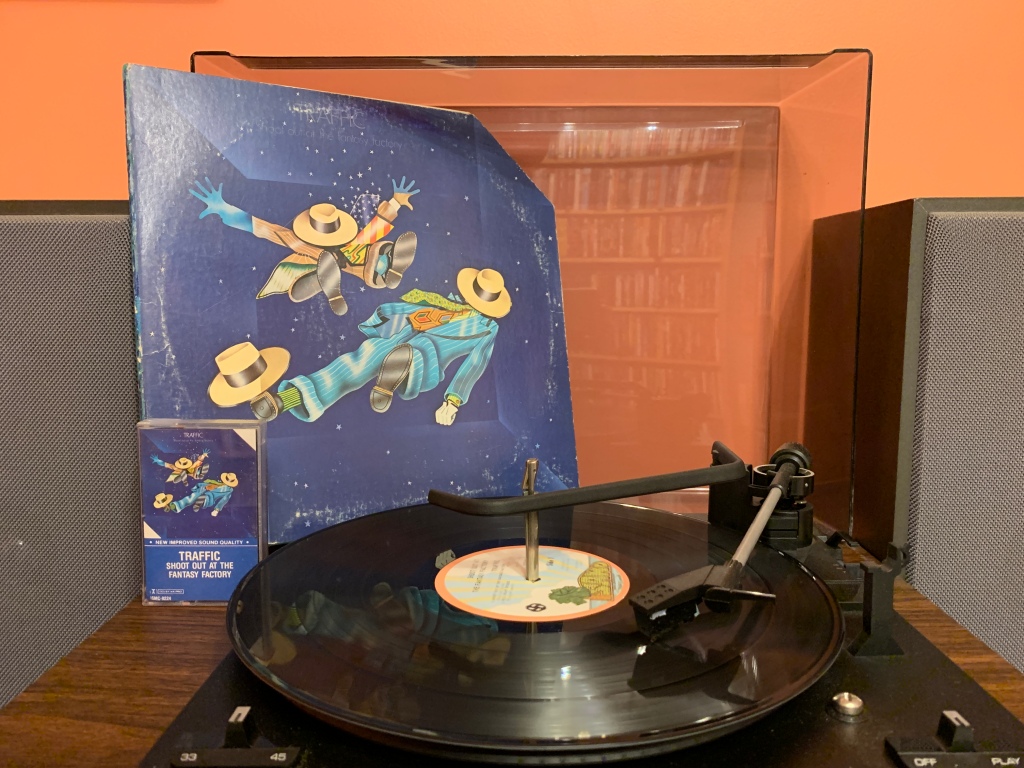
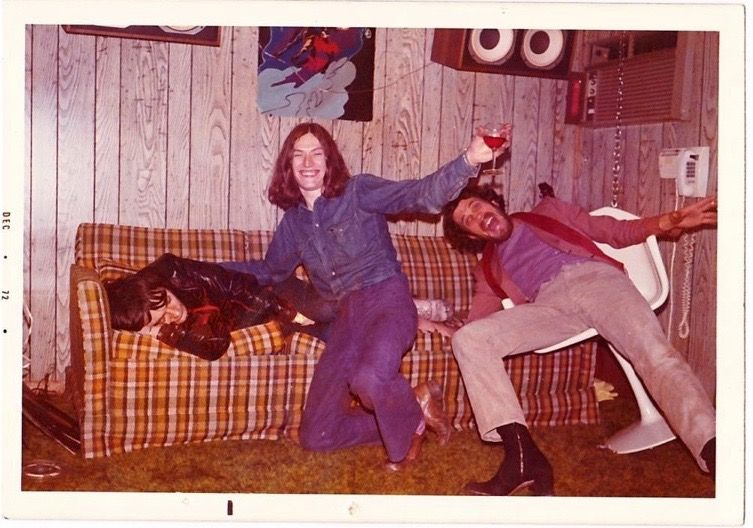
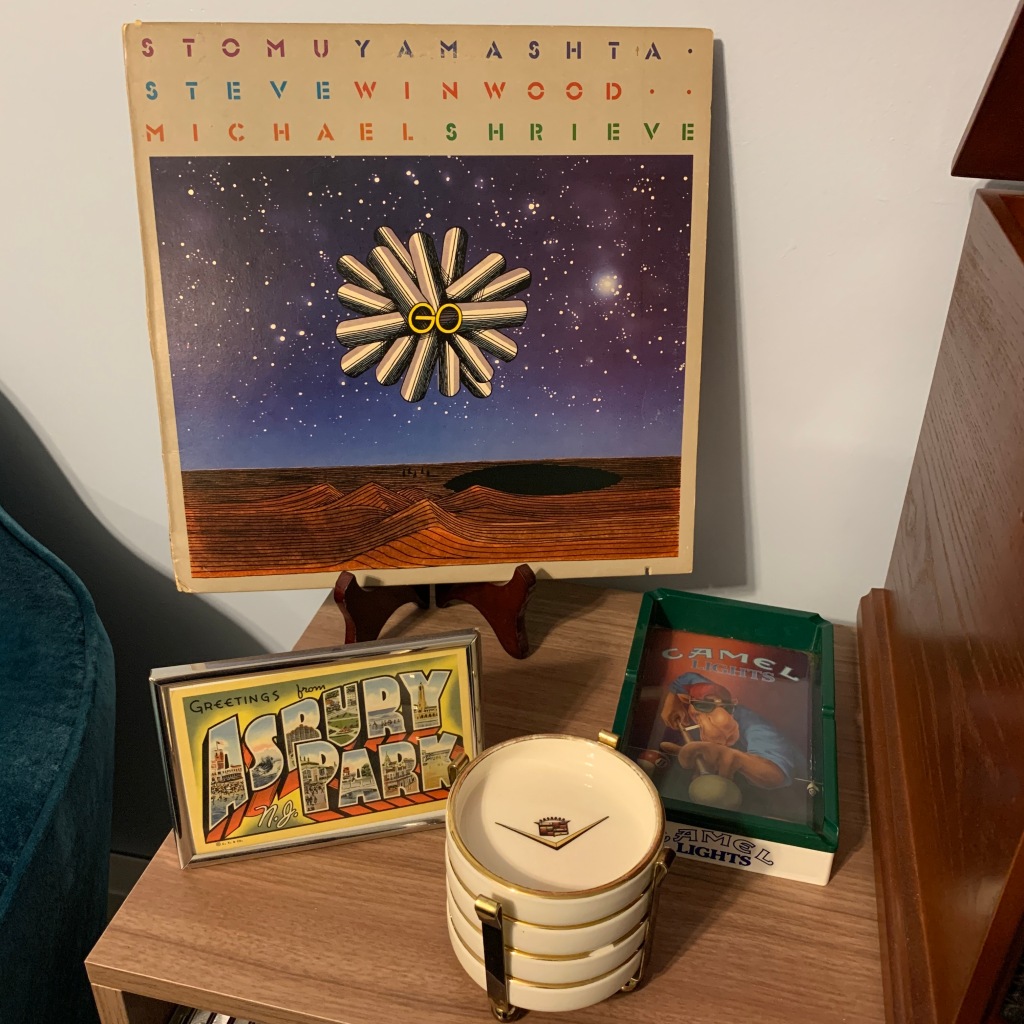

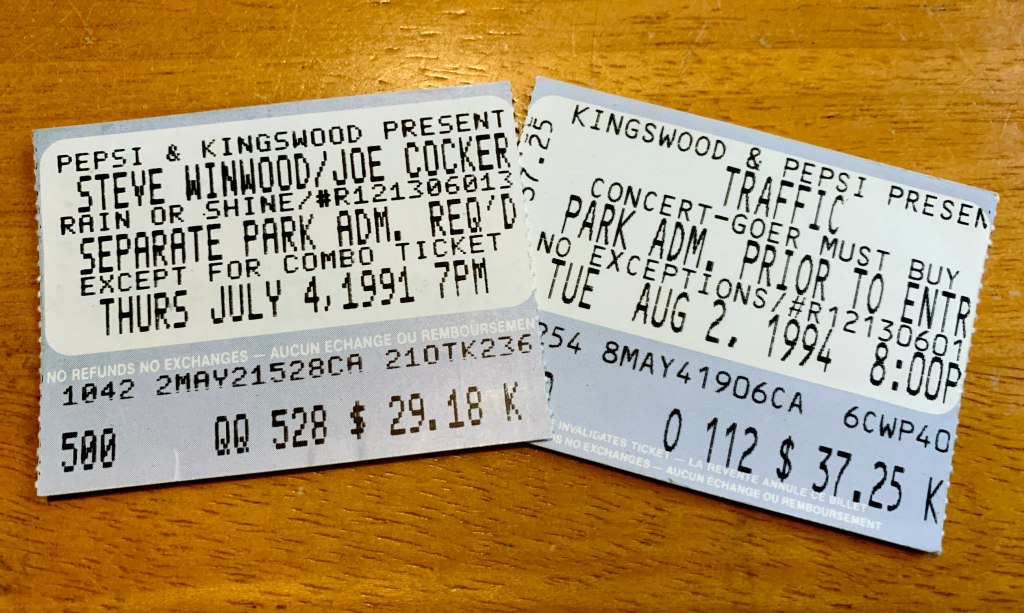
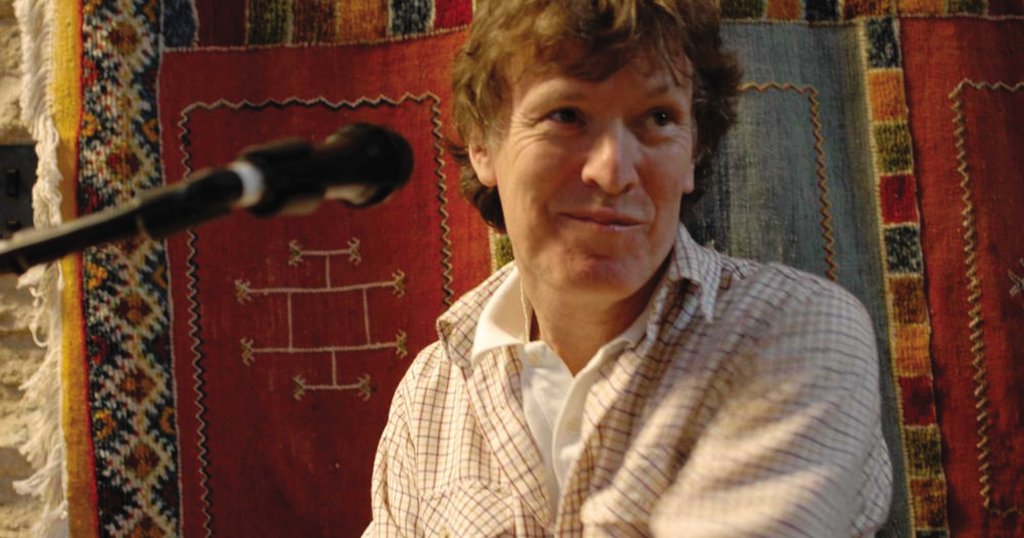
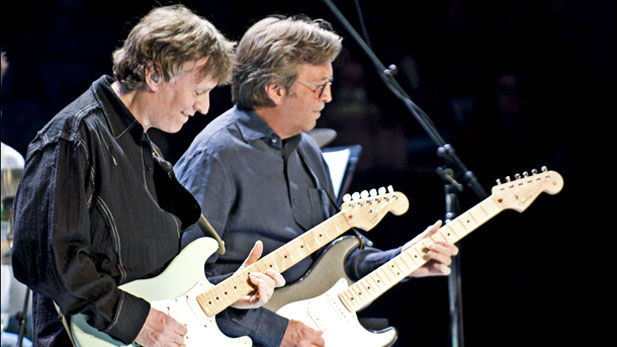
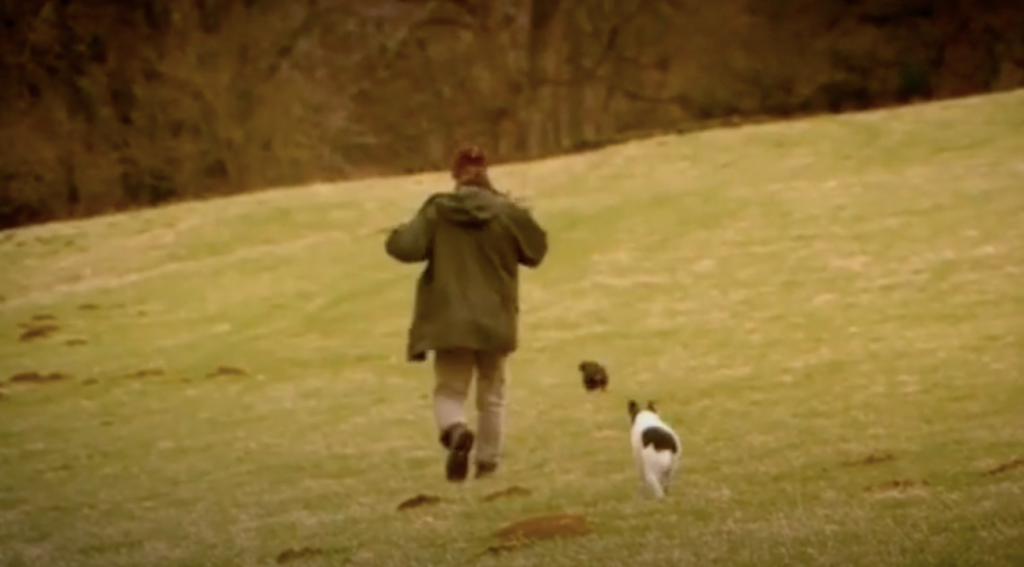
Check out The Spencer Davis Group’s rendition of “Nobody Knows You When You’re Down and Out” to hear the young Winwood sounding like Ray Charles (and the video of them playing in their pajamas is entertaining).
Sounds great! I will check it out.